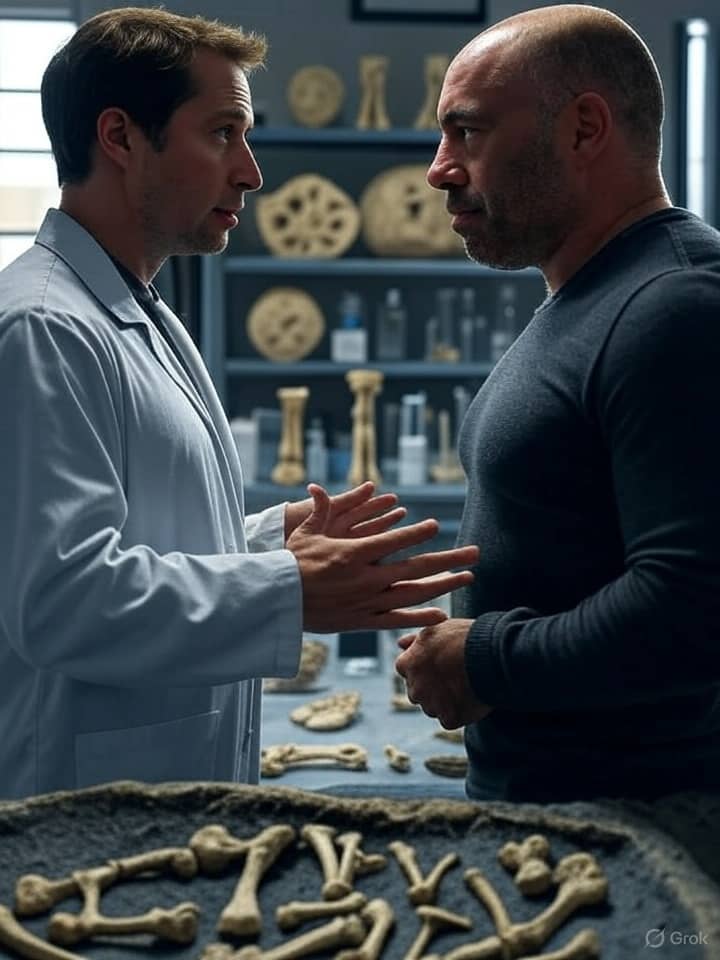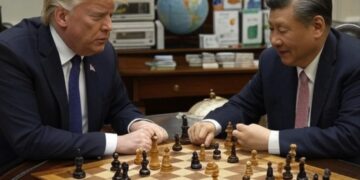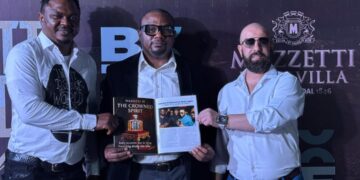In a riveting episode of ‘The Joe Rogan Experience’ earlier in the year Ben Lamm, CEO and co-founder of Colossal Biosciences, captivated listeners with a deep dive into the groundbreaking science of de-extinction. Lamm detailed how his team extracts DNA from 10,000-year-old bones and transforms it into living cells, offering a glimpse into a future where extinct species like the dire wolf and woolly mammoth could roam again. This article explores the cutting-edge techniques, ethical considerations, and transformative potential of Colossal’s work as shared in the conversation with Joe Rogan.

The Science of Ancient DNA Extraction
The journey to revive extinct species begins with the delicate task of extracting ancient DNA (aDNA) from fossilized remains. Lamm explained that ancient DNA is often highly degraded, fragmented into tiny pieces due to environmental factors like heat, humidity, and time. To overcome this, Colossal targets well-preserved specimens, such as those found in permafrost or dry, cold caves, where DNA degradation is minimized. A prime example from the podcast was the extraction of dire wolf DNA from a 13,000-year-old tooth and a 73,000-year-old skull, specifically from the petrous bone—a dense structure near the inner ear known for exceptional DNA preservation.
Lamm described the process as akin to solving a “genomic jigsaw puzzle.” For the dire wolf project, Colossal initially recovered only 15% of the genome (0.15x coverage) from a single tooth, far short of the 10x coverage needed to accurately reconstruct the full genome. To bridge this gap, they scoured museum collections for additional fossils, eventually securing permission to drill into the petrous bone of a 72,000-year-old dire wolf skull. This yielded 13–14x coverage, providing enough genetic data to map the dire wolf’s genome comprehensively.
Advanced technologies, including artificial intelligence (AI) and computational biology, play a pivotal role. AI algorithms analyze fragmented DNA sequences, piecing them together by comparing them to the genomes of closely related living species, such as the gray wolf for dire wolves or the Asian elephant for woolly mammoths. This comparative approach identifies key genetic differences that define extinct species’ unique traits, like the dire wolf’s larger size or the mammoth’s woolly coat.
From DNA to Living Cells
Once the genome is reconstructed, the next challenge is turning this genetic blueprint into living cells. Lamm outlined how Colossal uses CRISPR-Cas9, a precise gene-editing tool, to insert extinct species’ traits into the cells of their closest living relatives. For dire wolves, they engineered gray wolf cell lines to express traits like stockier builds and thicker skulls, resulting in three dire wolf pups—Romulus, Remus, and Khaleesi—born in October 2024 and now living in a 2,000-acre ecological preserve.
Similarly, Colossal created “woolly mice” as a proof of concept, editing mouse cells to express mammoth-like traits such as thicker fur. This step validates their genome-editing techniques before applying them to more complex species like the woolly mammoth, which requires editing Asian elephant cells—a process complicated by the 22-month gestation period and the endangered status of elephants.
Lamm emphasized the role of multiplex editing, which allows simultaneous modifications of multiple genes, ensuring precise expression of desired traits while minimizing unintended effects like disease susceptibility. AI-driven computational biology further enhances efficiency by predicting how edited genes will interact, reducing trial-and-error.
Ethical and Ecological Implications
Joe Rogan pressed Lamm on the ethical concerns of de-extinction, asking, “What right do you have to invade the natural process of nature and to inject your curiosity and your ability to create new life?” Lamm acknowledged the weight of this question, noting that humans already disrupt nature through activities like overfishing, deforestation, and species extinction (e.g., the thylacine, hunted to extinction by humans). He argued that de-extinction could restore ecological balance, citing studies like those at Pleistocene Park, which suggest reintroducing mammoths could enhance Arctic carbon sequestration and habitat diversity.
However, Lamm was candid about the uncertainties. Reintroducing extinct species into modern ecosystems, which have evolved without them, could have unforeseen consequences. Colossal mitigates this by partnering with 48 global conservation groups and engaging indigenous communities and governments to ensure responsible rewilding. They also biobank genetic samples of endangered species, like the Northern White Rhino, to support conservation efforts.
Critics, including some on Reddit’s r/megafaunarewilding, argue that Colossal’s creations, like the dire wolf pups, are not “true” dire wolves but genetically modified gray wolves, raising philosophical questions about species authenticity. Lamm countered that their goal is functional de-extinction—creating organisms that ecologically resemble their extinct counterparts, even if not identical.
A Vision for the Future
Lamm’s conversation with Rogan underscored the transformative potential of synthetic biology. Beyond de-extinction, Colossal’s technologies—such as microbes that break down plastics or artificial wombs for cloning endangered species—could address global challenges like pollution and biodiversity loss. Yet, Lamm also highlighted ethical boundaries, stressing that Colossal focuses solely on animal conservation, not human genetic enhancement, despite controversial advancements elsewhere (e.g., China’s gene-editing experiments).
For stakeholders, Colossal’s work represents a bold intersection of science, ethics, and conservation. By extracting DNA from ancient bones and engineering living cells, they’re not just reviving extinct species but pioneering tools to safeguard biodiversity. As Lamm told Rogan, synthetic biology is “akin to discovering fire”—a powerful force that, if harnessed responsibly, could reshape our planet’s future.
Learn more about Colossal Biosciences at colossal.com and follow their updates on YouTube and X (@ItIsColossal).
Photo Credits: @BenLamm on X.









































